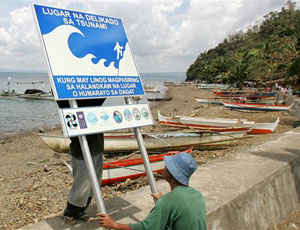Trying to control nature is a human trait, and engineers have much to say about how to do it. There will be many lessons drawn from the March 11 earthquake and tsunami that struck Japan, but one issue that should receive greater attention is the failure of land-use rules to protect coastal communities. It would be surprising if this factor were overlooked, given how much thought is devoted to sustainability and preserving nature, not to mention how much is already known about the way population density increases the destruction caused by tidal waves. Plainly, better land-use rules could have saved lives and property.

Asia’s island nations, such as Indonesia, are especially dependent on their coastal zones. Most people living on the coasts are poor and unlikely to stay if they are forced to move inland. Japan, by contrast, has a comparatively affluent population crowded onto a small land area. Its citizens are known for their love of nature and the sea, and they now are paying a high tuition to learn about the limits of engineered solutions.
The history of Asian tsunamis shows how difficult it is to eliminate tsunami hazards with warning systems. While the 1998 Papua New Guinea tsunami killed 40% of the at-risk population, the 1993 Sea of Japan tsunami killed only 15% because of an early-warning system. Though they have saved lives, warnings, evacuation measures and education are not enough.
A reckoning has arrived about how people live in relation to the ocean, and not just because of global warming and fears of rising sea levels. The economic consequences of oceanfront catastrophes extend across the globe, burdening people who never admire the surf or cool off in an ocean breeze. More developed countries must set an example now for wise land use. We need coastal zones that mandate setback lines based on up-to-date maps drawn from realistic hazard predictions. We must maintain and restore wetlands and greenbelts to absorb some of an ocean surge’s power. Needless to say, the siting and design of nuclear powerplants must be reevaluated.
The obsession with controlling nature is losing favor in some U.S. river towns. Flood-prone Davenport, Iowa, for example, has resisted building a costly flood wall to prevent the Mississippi from overtopping its banks, as it regularly does. Instead, Davenport has chosen to restrict construction. At ENR’s recent “Mitigating Disasters Through Design and Construction” conference in Washington, D.C., Davenport billed itself as “America’s Largest City on a Major River Without a Flood Wall.” Similarly, Grafton, Ill., removed entire flood-devastated subdivisions to higher ground to avoid the constant cycle of flood and recovery.
There is a hubris attached to “conquering” nature. The Davenport and Grafton decisions are important because wise land use is the best way to limit catastrophes inflicted by rivers and oceans.

Post a comment to this article
Report Abusive Comment